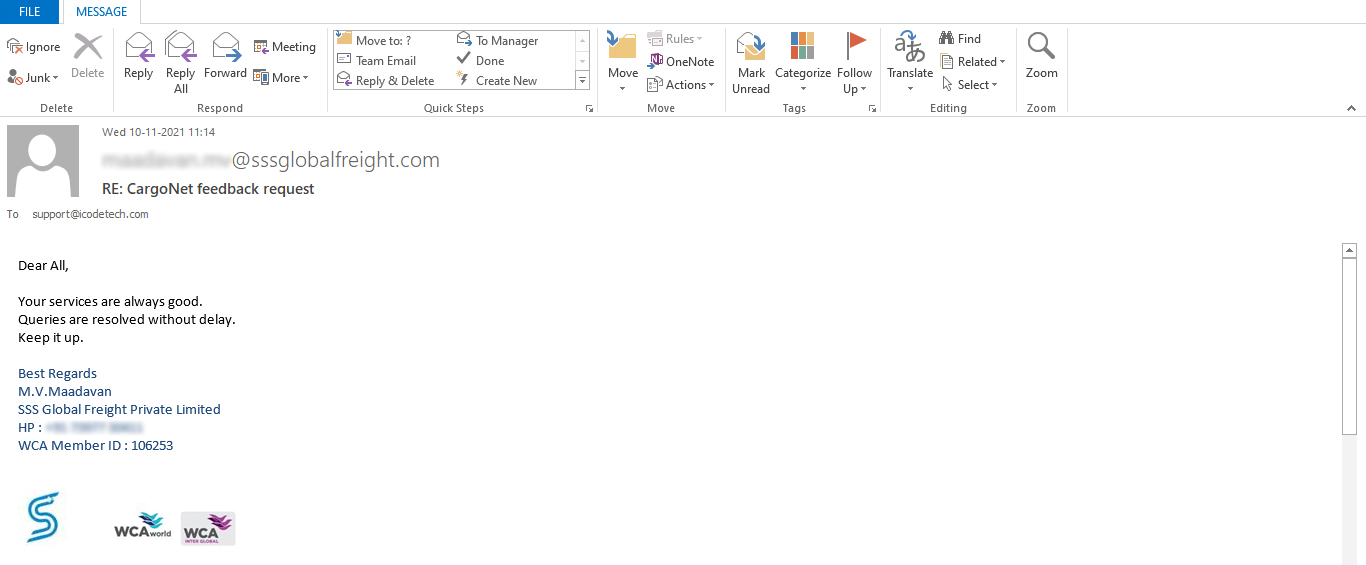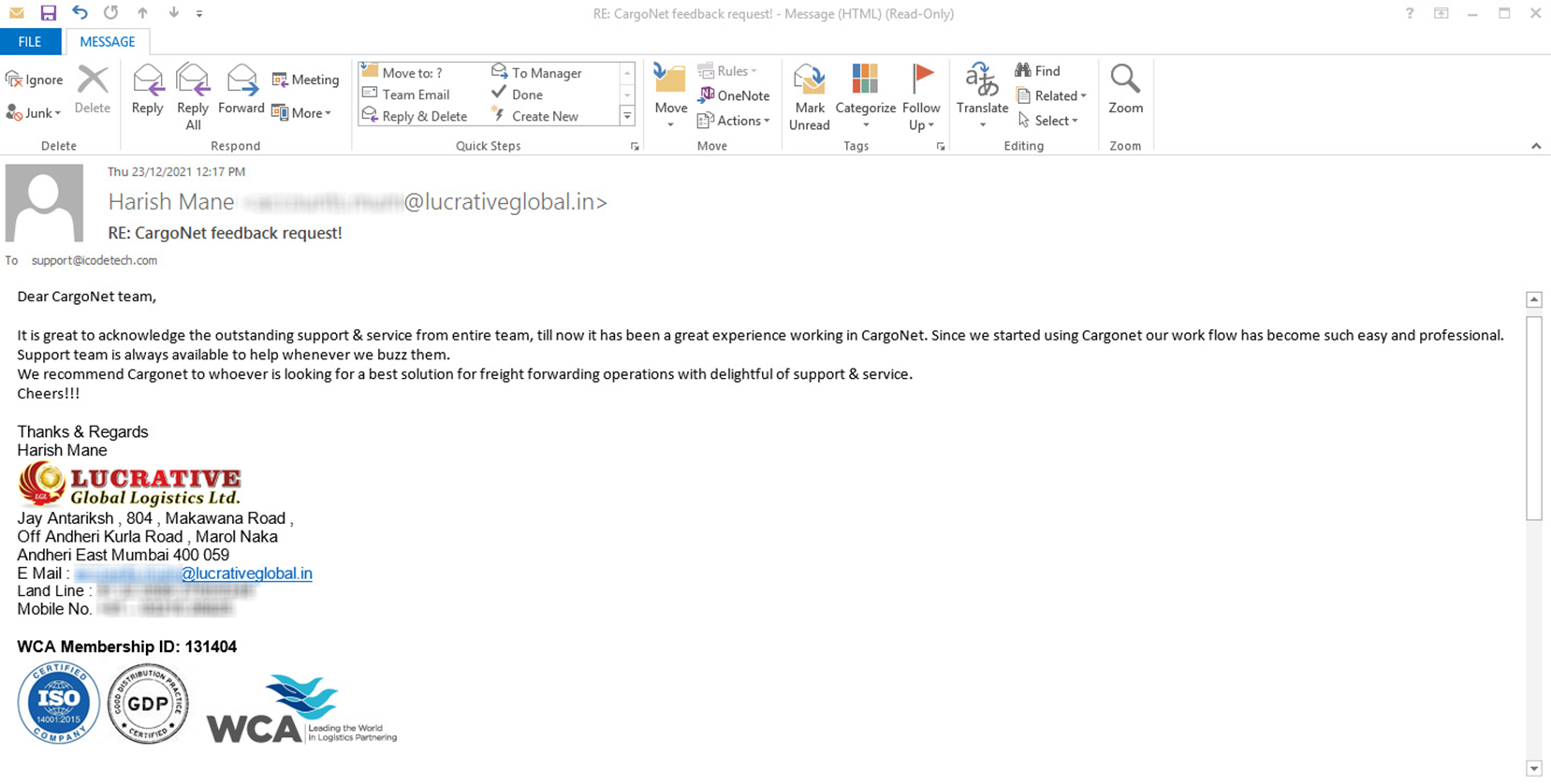In Global logistics and shipping, proper documentation is essential to ensure smooth operations and compliance with regulations. Two key documents that often come into play around (a) Bill of Lading (B/L) and (b) Shipping Bill. While they may sound similar, they serve distinct purposes in the shipping process. In this blog, we will explore what each document’s nature, their differences, and where to use them, as well as the various types of Bills of Lading used in shipping.
What is a Bill of Lading?
A Bill of Lading is a legal document issued by a carrier to a shipper. It acts as a receipt for the cargo being Export / Import, a contract between the shipper and the carrier, and a document of title. It outlines the details of the shipment, including the type and Commodity of cargo , the destination, and the consignee (the person or entity receiving the cargo). The Bill of Lading plays a critical role in international and domestic shipping.
Key Functions of a Bill of Lading:
- Receipt for Cargo: Confirms the carrier has received the cargo from the shipper.
- Contract of Carriage: Formalizes the agreement between the shipper and carrier for transporting the Cargo.
- Title Document: Allows the holder to claim the Cargo upon arrival or transfer ownership if the document is negotiable.
Types of Bills of Lading
In shipping, different types of Bills of Lading serve distinct roles to facilitate trade and secure shipments. Here are the most commonly used types:
- Straight Bill of Lading: This is a non-negotiable document, used when cargo is consigned to a specific individual or entity. Only the named consignee can receive the Cargo.
- Order Bill of Lading: A flexible, negotiable document that enables the shipper to transfer ownership of the cargo to another party through endorsement, making it useful in trade transactions.
- Bearer Bill of Lading: Also negotiable but without the need for endorsement, allowing ownership to transfer quickly through physical delivery.
- Clean Bill of Lading: Confirms that the Cargo were in good condition at the time of shipment, with no damage or discrepancies, reassuring the consignee of the cargo’s quality.
- Claused Bill of Lading: Notes any issues, damages, or discrepancies in the Cargo, indicating that the shipment’s condition differs from expectations.
- Surrender Bill of Lading: A negotiable bill that allows the importer to receive Cargo once the exporter surrenders the original document, streamlining the transfer.
- Express Bill of Lading: Used when speedy delivery is essential, bypassing the need for a physical copy to release Cargo and expediting the shipping process.
- House Bill of Lading: Issued by freight forwarders to provide detailed information about consignments under their handling.
- Container Bill of Lading: Specifically used for shipments in containers, documenting the Cargo as a single unit of cargo.
- Lash Bill of Lading: Issued for barge shipments loaded onto a vessel, detailing this mode of transport.
- Uniform Bill of Lading: Commonly used in rail and truck transportation, this standard bill is widely accepted for overland shipping.
Each type serves a specific purpose, ensuring accurate documentation, ownership transfer, and efficient movement through different phases of the shipping process.
What is a Shipping Bill?
A Shipping Bill is a document required for the export of Cargo. It serves as a customs declaration and contains detailed information about the shipment, such as the nature of the cargo, its value, and the destination. The Shipping Bill must be submitted to customs authorities for clearance before the shipment can leave the country.
Key Features of a Shipping Bill:
- Primarily used for customs clearance in international trade.
- Contains information required by customs, including cargo details, destination, and value.
- Initiates the export process and confirms the shipper’s intent to send cargo abroad.
Key Differences Between Bill of Lading and Shipping Bill
Understanding the differences between the Bill of Lading and Shipping Bill is essential for anyone involved in shipping and logistics. Here are the main distinctions:
1. Function:
- Bill of Lading: Acts as a contract, receipt, and document of title for the cargo.
- Shipping Bill: Serves as a customs document to declare the export of Cargo.
2. Usage:
- Bill of Lading: Used for both domestic and international shipments, regardless of whether the Cargo are for export or internal transport.
- Shipping Bill: Primarily used in the export process and required for customs clearance.
3. Parties Involved:
- Bill of Lading: Involves the shipper and the carrier, forming the basis of their agreement.
- Shipping Bill: Involves the shipper and customs authorities, ensuring compliance with export regulations.
4. Legal Status:
- Bill of Lading: Holds legal significance, especially in disputes about ownership and the condition of the Cargo.
- Shipping Bill: A procedural document used for regulatory purposes, without the same legal implications as a Bill of Lading.
When to Use Each Document
The Bill of Lading is essential whenever Cargo are shipped, whether domestically or internationally. It serves as the contract of carriage, provides proof of ownership, and allows the consignee to claim the Cargo upon arrival.
The Shipping Bill, on the other hand, is mandatory for all exports. Before the shipment can leave the country, this document must be submitted to customs authorities for clearance.
Common Challenges and Mistakes
Misunderstanding the role of these documents can lead to costly errors. Here are some common challenges:
- Inaccurate Information on Shipping Bills: Incorrect details can result in customs delays and penalties.
- Misunderstanding Negotiable Bills of Lading: Failing to grasp the implications of negotiable documents can lead to issues in ownership transfer.
- Lack of Documentation: Not retaining copies of both documents can complicate record-keeping and legal disputes.
Conclusion
In summary, both the Bill of Lading and the Shipping Bill play critical roles in the shipping process. While the Bill of Lading serves as a contract, receipt, and title document between the shipper and carrier, the Shipping Bill is primarily used for customs clearance and export compliance. Understanding the differences and using each document appropriately is essential for ensuring smooth operations in logistics.
Simplify Your Shipping Process
Are you facing challenges with shipping documentation? Whether it’s managing a Bill of Lading or a Shipping Bill, we’re here to help. Drop your questions or share your experiences in the comments below. Want a hands-on solution? to see how we can streamline your shipping process!












